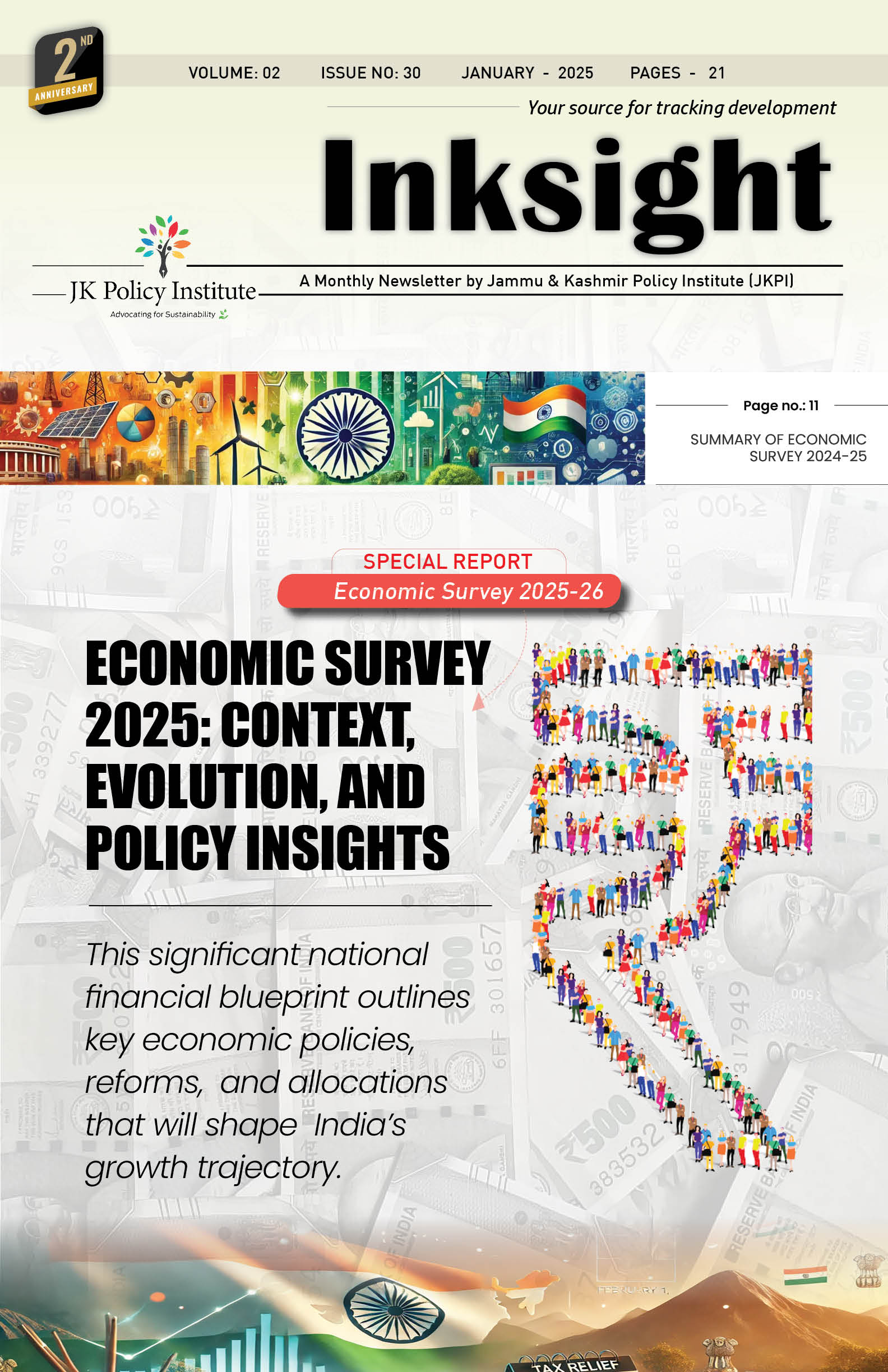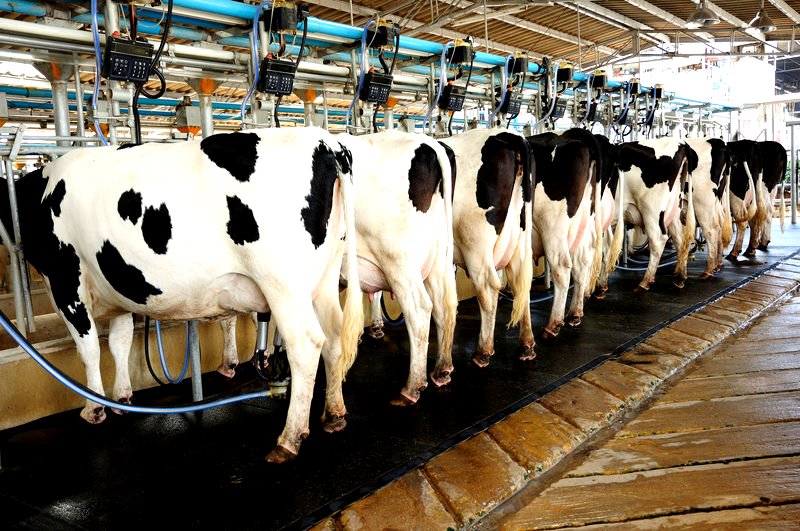By Mukhtar Dar and Dr. Smruti Smita Mohapatra
Introduction
Jammu & Kashmir has witnessed a massive increase in dairy production for the last five years. Jammu & Kashmir has set up hundreds of dairy farming business units. The households that are rearing dairy cows for family consumption have also produced surplus milk. In the past two decades, the Kashmir Valley’s milk production has increased by approximately 250%. Official sources state that there are 32 lakh cows in Jammu and Kashmir, which represents 1.04% of all cows in India. The milk economy in Jammu & Kashmir is about Rs 9080 crore. By the end of January 2023, Jammu and Kashmir had produced 2513.72 metric tonnes of milk, an increase over the year 2022. There are over 40,000 dairy farms in the Kashmir valley. Despite such growth in this sector, Jammu and Kashmir is still falling away from becoming self-sufficient in milk and milk products. There is still a large scope to streamline the dairy sector with a proper policy framework to make Kashmir self-reliant in milk production. Due to its profitability and rising demands, it is deemed to create more employment opportunities in the region. However, beyond press releases and headlines there are several challenges that are affecting the dairy farmer in Kashmir. In a recent study, JK Policy Institute tries to find out such challenges that the native dairy farmers are facing.
Dairy farming in Kashmir
Dairy farming was a traditional pursuit of farming in Kashmir. Earlier it was used to meet the milk demands of households. As households started to produce surplus milk with the advent of crossbreeds like Holstein Friesian (HF), they could earn along with meeting the household needs. The other factor that helped to develop dairy farming in Kashmir was the expansion of road-based connectivity; due to which dairy cooperatives like Jammu & Kashmir Milk Producers Co-operatives Limited (JKMPCL), popularly Snowcap, reached the far-off place to collect the milk from farmers. Pertinently, in Kashmir, every area or village has a dedicated person locally called ‘Goer’ who collects milk from the village or surrounding area from the dairy farmers at the first light of dawn. Later the Goer sells it.
In Kashmir, there is a lot of demand to produce milk locally to meet the self-sufficient status. It implies that there is a scope for employment. With the awareness programmes and high demand for milk, hundreds of unemployed people ventured into the dairy business. The initial investment cost between Rs 5,00,000 and 10,00,000 having four cows hundreds of dairy farms were set up in Kashmir. The initial investment may vary with the increasing number of dairy cows. It also depends on the type of cowshed and the land. In a questionnaire prepared by the JK Policy Institute addressing various concerns around the dairy business, it came forth that cowsheds are constructed by dairy farmers on their own mostly on their milking land. Few dairy farmers have renovated their traditional cowsheds. In 2022, Ghulam Qadir Bhat of Hukhlatri village of Budgam district started dairy farming with four Holstein Friesian (HF) lactating cows with an investment of around Rs 5,00,000 by renovating his traditional cow shed. Mostly the crossbreed cows from Punjab are being brought to Kashmir. With four lactating cows, the annual income of the farmer remains around Rs 5,05,000 with an expenditure cost of around 3 lakhs excluding the fodder that is being produced at home. One HF cow pours around 14 litres of milk each day. The price of one litre of milk varies from 32-40 rupees depending on the fat and Solid Not fat (SNF) content in milk. It has been measured on an analyser unit provided to the village milk cooperative societies by JKMPCL. It is pertinent to mention here that Jersey cow’s milk has more fat content compared to HF. And its rate varies from Rs 40-50.
Challenges and recommendations
For crossbred livestock in particular, high-yielding and nutritious feed is crucial for both scientific and financial livestock management. The production of livestock is more efficient on cultivated fodder than on degraded grazing grounds; nevertheless, the amount of arable land used for fodder production in Jammu & Kashmir is only 4% due to stagnant fodder cultivation. According to Ahmad (2016), Jammu & Kashmir produces 86.5 lakh tonnes of fodder altogether, of which 61.4 lakh tonnes are green fodder and 25.1 lakh tonnes are dry fodder. Jammu & Kashmir has a 27.31% deficit in dry feed and a 67% shortfall in green feed. The majority of concentrates used in the feeding of cattle and poultry are imported. Thus, the majority of the feed and fodder that reaches Kashmir is imported at extremely high costs from outside the state. Kashmir should be the site of the feed mill. Similarly, farmers should be assisted to produce good quality with good quantity fodder on their lands by providing high-quality seeds so the deficit can be minimized and farmers become self-sufficient to feed their animals.
Marketing is paramount for any farming to grow and prosper. The dairy farmers of Kashmir valley lack marketing techniques and avenues. Mostly milk producers sell their milk to local milkmen (Goer) at the rate of 30-35 rupees. In some places, there are milk analyzers that are helping farmers to receive better rates as compared to unmeasured selling. However, still the rate is not appropriate. The Government of Jammu and Kashmir on October 13, 2022, revised the rate of fresh milk in the loose form (boiled) and its byproducts. The cow milk (loose form boiled) having 3 to 3.5% fat and 8.5% SNF is Rs. 45 per litre. The curd standard is Rs 55 per/kg. The cheese Kashmiri (Paneer) dry without the water content is Rs 250 per/kg. However, farmers did not get such rates. It is important to note that a litre of water is sold for 20 rupees, whereas a liter of milk is sold for 30 rupees. The administration should take steps to fix the appropriate rate for milk and the rate should be disseminated to the public through different means. The rate list should be pasted at every milk analyzer unit and milk shop. Violators should be punished.
Knowledge is the first step toward any farming endeavour’s success. The same is true for dairy farming. Many times, dairy farmers experience losses as a result of inadequate guidance. In 2016, three cows were acquired from Punjab by Ghulam Qadir Dar of Budgam’s Lasipora village. However, he later sold them since they were not producing sufficient milk. Later with guidance from the animal husbandry department, he restarted dairy farming. It is reported that cows from other states are being transported to Kashmir Valley. Thus, the frequent and extensive travels result in the calves being lost and under stress. Second, the harsh winters in Kashmir make it extremely difficult for farmers to rear them, in many cases they do not survive. The animal husbandry department has a role to play. They should produce high-quality cow breeds through artificial insemination that can produce a good quantity and quality of milk and the animal can survive the temperate weather of the valley.
Conclusion
Since Jammu and Kashmir has still a long way to becoming self-sufficient in milk and milk products, there is a high demand for the establishment of dairy farming units in the state. However, in contrast to earlier times when animals were raised up with minimal work, cow-rearing in the twenty-first century is an extremely costly endeavour. To expand dairy farming in Kashmir, dairy farming needs to be turned into a properly organized sector. The industry can move from a net deficit to a net surplus, but this will require outputs that should be more than the input cost. Fodder and feed should be available at lower prices and the role of field-level workers and dairy stakeholders to be enhanced in order to properly disseminate information. Thus, dairy farming can become a source of nutrition, rural employment, and women empowerment in Kashmir Valley.
References
https://theprint.in/india/growing-trend-of-dairy-farming-in-jammu-and-kashmir/1609333/
https://krishi.icar.gov.in/jspui/bitstream/123456789/13568/1/211_49-54_21.pdf



Leave a Reply
You must belogged in to post a comment.